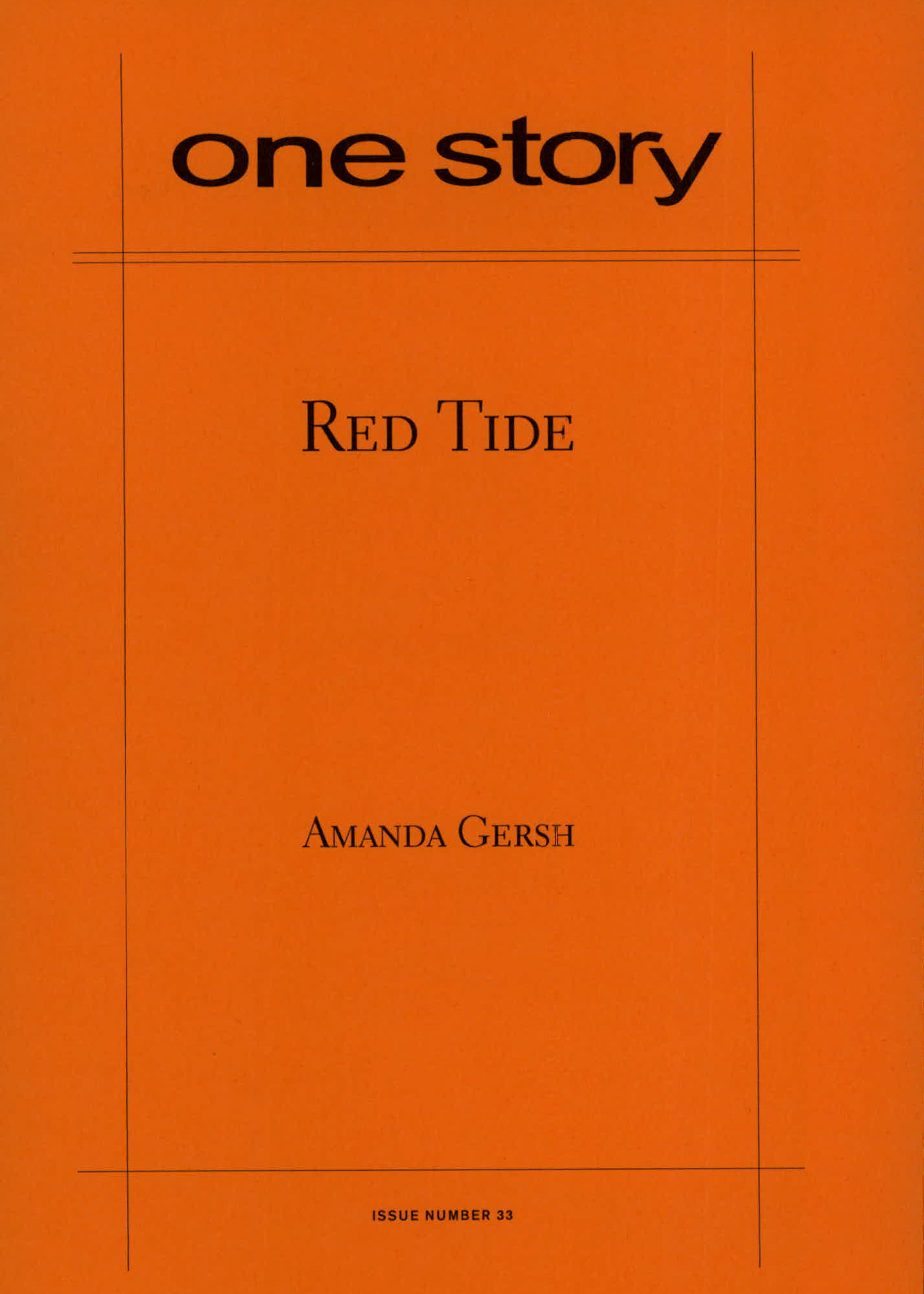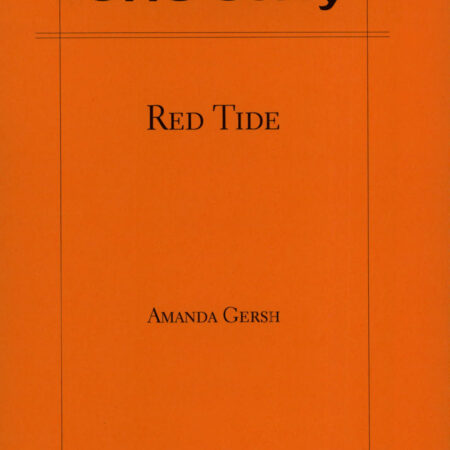
Red Tide
$2.50
29 in stock
Excerpt
Because of our mothers, Nick is forced to play with me. The moms met on the Kenilworth tennis courts at the beginning of summer. It’s too hot for Cape Town and my mother takes the heat personally, sulking in a pool chair on the beige lawn, staring at the brown hole where the pool will go, but not this summer, next summer, so my father says. Most days, Mom and Dawn lie topless under the avocado tree. They smoke Bennie and Hennies and exhale blame before you do anything, before you even ask for a Marie biscuit. We stay away.
Dawn’s son Nick has a thick pink mouth and wet glinty eyes that hold dirty games, like Doctor Doctor. We take turns flashing each other, or some days we just play cricket. Or make a chlorine bomb. His arms are as thin as knives and just as vicious. He twists my wrists into Chinese bangles and I pinch thin bits of his skin until he has his own tears. We are seven and nine.
Amanda Gersh
Amanda Gersh grew up in South Africa and received an MFA from Columbia University. Her fiction and non-fiction has appeared in Open City and The Believer, among others. “Red Tide” belongs to a collection in progress, entitled The Disappearing House.
Q&A by Hannah Tinti
- HT: Where did the idea for this story come from?
- AG: The ending came first. I think it was generated by some work I did a while ago. I was writing a novel, targeted at the teen market, called The Summer of Skinny-Dipping. Unbelievable to think I couldn’t sell it with a title like that...Quite pathetic, really. Anyway, I looked up things like phosphorescence because these skinny-dipping teenagers were frolicking on various beaches encountering moonlight and that romantic kind of plankton, or whatever it is, that makes waves glow in the dark. So there was that. I think I must have picked up something about red tide back then, or moved from cute glowing plankton to evil algae in my subconscious, because the idea of red tide just appeared one day. I saw this scene, the story’s final transaction taking place on a beach, and then the words “red tide” swam into my mind and I thought ooh! Right away, I knew it had this menace and power that I wanted to use in a story, and the two monosyllabic words had this great scary feel to them that I knew was the title for something. Finding that something, the subject, wasn’t hard. I am quite endlessly fascinated by the complexity of children, their capacity for meanness and manipulation. Youth is obviously not some state of pure, mindless innocence. Children and, of course, teens are equally as complicated as adults, they just have a different language, their own special codes of communication. The young world is very elaborate when you look back at it—like another culture altogether. This has interested me ever since I read “Cat’s Eye” by Margaret Atwood. That book made a great impression on me in my first year of college, the way she handled friendship and power and culpability in children.
- HT: What was the most challenging aspect of writing this story?
- AG: Writing in this very particular, vernacular South African child’s voice, while trying to keep certain adult rhythms and reflections. I tried, at first, to do something different—to develop this hybrid child-adult voice. There are people who do this brilliantly. Like Joy Williams, who does everything brilliantly. But I’m not Joy Williams, so I couldn’t get it right. Its solutions lie in the third person but the third person didn’t work for this story...I ended up with this compromise. It’s not perfect.
- HT: Why did you choose to set this story in South Africa?
- AG: This belongs to a series of pieces set in South Africa. SA is where I grew up, so it’s my natural choice for a story about childhood. Also, the place just has this very extreme kind of beauty and complexity and there’s no reason, once you’re there fictionally or actually, to be anywhere else. At a deeper level, I felt this organic connection between the landscape and culture and the plot. It’s a very South African story. There is this idyllic landscape shot through with a sense of unease, or something lurking beneath that you can’t see when you’re in it, but it’s poisoning everything. And this is an atmosphere that I feel was very present in the country when I was young in the 1980s; or maybe I’m extrapolating after the fact. One has all these different, conflicting perspectives, all of them true. At any rate, I’m very interested in writing about suburban culture of that time and place—my own background. There is a lot to mine, and not a lot of people doing it.
- HT: Do you consider this a ‘coming of age’ story?
- AG: Yes, one could say that. The main character in this story is a bit of a victim throughout, but she changes at the very end, for better and for worse. She moves into the adult realm of power and consequence. Actually, on second thought, the story shows that this realm is not the exclusive province of adults, and that’s the point. So maybe ‘coming of age’ isn’t quite right after all. Regardless, there’s a transformation.
- HT: What is the best bit of advice about writing you have ever received?
- AG: I think the best advice is the kind you can simultaneously take and reject in this paradoxical way. Take “write what you know”. I used to really think that was stupid, just a workshop cliche. Now I know it is not stupid even if it is a cliche, but I also know that the reverse is true. Writing from experience can be the right approach, but someone once advised me not to go with the first instinct, with the comfortable or the familiar idea that just arises naturally, but to hesitate and look for a new way in. This can be a phrase or a plot element, whatever. But this hesitation is, I think, very valuable.
- HT: What are you working on now?
- AG: A collection of stories set in SA, called The Disappearing House. The stories all in one way or another depict the culture in which I grew up. So that’s the priority, but I am constantly diverted by these other stories that are altogether different, which I think of as my American pieces. Silly stories about hedgehogs and baby showers. I have this piece, called “Hairy is the New Bald” that I have been working on for ages. I can never finish a story unless I have twelve others going. That way, by avoiding one story, another gets finished (occasionally). It’s a terrible way to work.
